The week at a glance
- Marmora's Warbler still in Gwent
- Little Shearwater still in Devon
- Iberian Chiffchaff in Co. Waterford and long-stayers in Gwent and South Yorkshire
- White-throated Sparrow in Gwynedd
- Possible Booted Eagle still in Hampshire
As might be expected in midsummer, things have been a bit quiet this week. For anyone a bit slow off the mark, several of the star birds of the spring stayed around, and many were also a photographer's dream.
The obliging male Marmora's Warbler continued to sing at Blorenge (Gwent) until 15th, and the collection of photographs are now quite stunning. As is sadly sometimes the case, though, there was a small fly in the ointment: despite repeated pleas for visiting birders to stick to the roadways and car park, various photographs appeared on the web apparently showing the selfish few pushing the definition of 'road' somewhat. There was even a suggestion that there had been so much disturbance on parts of the moor that this had caused the failure of some breeding birds. We've been unable to verify this, but it serves as a reminder that we must all take responsibility for our hobby. Soap box back in its cupboard now.

Marmora's Warbler, Blorenge, Gwent (Photo: Dave Hutton)
Lundy's Little Shearwater also hung around until at least 12th, singing (if you can call it that) from its inaccessible burrow on the south of the island. Also happily singing on territory all week were at least two of the Iberian Chiffchaffs: at Wentwood Forest (Gwent) and Potteric Carr (South Yorkshire). In addition, two bursts of song heard from a bird at Marloes Mere (Pembrokeshire) on 12th also probably related to this species, but it wasn't heard subsequently. Not wanting to miss out, what may be Ireland's first record of Iberian Chiffchaff was found as I write this, at Brownstown Head (Co. Waterford) on 16th. Confusion was caused though as this bird was giving mixed song (Chiffchaff/Iberian Chiffchaff). This follows a 'possible' in Co. Mayo back in September 2004.

Iberian Chiffchaff, Wentwood Forest, Gwent (Photo: Ashley Stow)
Yet another White-throated Sparrow was found this week, this time at Bardsey Bird Observatory (Gwynedd) on 11th. This is only the second record for Wales — the first was also on Bardsey, for three weeks in autumn 1967.

White-throated Sparrow, Bardsey Island, Gwynedd (Photo: Richard Brown)
The most notable 'almost' this week was a Pallas's Reed Bunting found on a survey boat in the Dogger Bank area of the North Sea on 9th. Sadly, despite surviving the night it died the next day. This is a bit of a purple patch for the survey team, who also found the recent Dark-eyed Junco, and also found a Bluethroat this week. Pallas's Reed Bunting remains an elusive bird in Britain. The first two records were on Fair Isle (Shetland), in 1976 and 1981, with a bird ringed in Sussex in 1990 identified from photographs after the fact. This species must be very high up on the hit list of many modern listers.
I daren't even write about it, but the Booted Eagle farce continued this week. Claim after claim seemed to be surfacing during the week, with 'probables', 'fly-overs' and confusion being the order of the day. Reports came from Sydmonton (Hampshire) on 10th and again on 11th, then over nearby Old Burghclere twice on 12th. The latter bird was photographed and proved to be a Common Buzzard, though admittedly one lacking some primaries and tail feathers. Back in Suffolk, there was another report of a bird over the Orwell Bridge on 10th and 13th, though it was also photographed on the earlier date and again appeared to be a Common Buzzard. It'll be fascinating to see how many of these records make it to BBRC, though I'd imagine they'll all have a rather rocky road to acceptance. Firsts for Britain don't come easy!
There was plenty of other interest during the week, with a good supporting cast of 'not-so-megas'. A drake Blue-winged Teal at Fen Drayton (Cambridgeshire) on 15th–16th was only the eighth for the county, and if only it had managed to find the female at Paxton Pits (only 15 km as the duck flies), just two weeks earlier!
Elsewhere the smart drake Ring-necked Duck remained on Gaddon Loch (Fife) to 12th, moving to nearby Angle Park on 16th. The near-resident Ferruginous Duck at Chew Valley Lake (Somerset) was reported on 10th but possibly remained all week.

Ring-necked Duck, Birnie & Gaddon Lochs NR, Fife (Photo: John Nadin)
An adult drake King Eider at Blackdog (Aberdeenshire) on 10th may well have been the long-staying bird from the nearby Ythan estuary, seen earlier in the day on 10th. The same site also saw a drake Surf Scoter on 12th, and this was presumably the same as that off Murcar the previous Saturday.
Late winter fare livening up a day's birding included a drake Smew with 20 Goldeneye on Loch Leven (Perth & Kinross) on 15th and also a Ross's Goose there. There was also the rather unexpected record of a female Red-breasted Merganser at Rainham Marsh and then Crayford Marshes (London) on 15th–16th.
On the seabird front, the sea was typically quiet, with the only notable records being the first Cory's Shearwater of the year, off Goring-by-Sea (Sussex) for 20 minutes on 11th and a Balearic Shearwater past Portland Bill (Dorset) on 16th.
The week saw three stork records: Whites over Sherborne (Dorset) on 10th and Rawmarsh (South Yorkshire) on 16th, with Black Stork over Jurston (Devon) on 13th. Purple Herons were also rather thin on the ground, and away from the breeding birds at Dungeness (Kent), the only record was of a bird at Minsmere (Suffolk) on 10th–11th.
The Great White Egret remained at Loch of Strathbeg (Aberdeenshire) on 11th, in the unlikely company of a drake Smew and a drake Scaup, with one over South Woodford (London) on 11th and a bird at Lady's Island Lake (Co. Wexford) on 13th.
Much more numerous, as expected, were Spoonbills, with birds from Co. Cork to Kent and Aberdeenshire to the Isles of Scilly. The largest groups were six at Blacktoft Sands (East Yorkshire) on 10th and eight at Gibraltar Point (Lincolnshire) on 14th–16th. Two of this latter group were colour-ringed, both originating from The Netherlands. One hadn't been seen since being ringed in the nest in 2008, but the other, ringed in 2007, had been seen in Spain in June and September 2008 and in France in November 2009. There must be plenty more records of colour-ringed birds out there, so do make sure you report them!
There were still a few late, or more likely non-breeding, Ospreys passing through: at Ogston Reservoir (Derbyshire) and Great Oxendon (Northamptonshire) on 11th, Oxford Island (Co. Armagh) on 13th, Burton Mill Pond (Hampshire) on 13th–14th, Ulley Reservoir (South Yorkshire) on 15th and possibly the same at Firsby Reservoir (South Yorkshire) later in the evening. Black Kites were also in evidence, with birds over Redruth (Cornwall) on 10th, over Titchwell and Thornham (Norfolk) on 12th, with a 'probable' over Fallin (Forth) on the same date.
The first-year male Red-footed Falcon remained at Ouse Fen (Cambridgeshire) to 12th, whilst a female was at Exminster Marshes (Devon) on 11th–13th and a very smart adult male was harassing the local Barn Owls at Whetsted GP (Kent) on the evening of 12th. Equally smart must have been the grey-morph Gyr Falcon again on South Uist (Outer Hebrides), this time from Ardivachar Point.

Red-footed Falcon, Exminster Marshes RSPB, Devon (Photo: Dave Stone)

Red-footed Falcon, Whetsted GPs, Kent (Photo: Marcus Lawson)
If you get a chance, do visit the Ouse Washes (Cambridgeshire) and experience the spectacle of 'singing' Spotted Crakes, with three males at dusk on 14th. There are then the well-known East Anglia sites to visit to see Common Cranes and, away from these, a single over Carron Valley Reservoir (Clyde) on 10th was followed by two at Loch of Broadhouse (Orkney) on 11th and one at Lower Largo (Fife) on 13th–14th.

Common Crane, Lower Largo, Fife (Photo: Willie McBay)
All was quiet on the wader front, with the only highlights being Black-winged Stilt at Portadown (Co. Armagh) on 15th, Pectoral Sandpiper on Tiree (Argyll) on 10th, the Broad-billed Sandpiper remaining at Port Clarence (Cleveland) to 15th and a Red-necked Phalarope popping in to Frampton Marsh (Lincolnshire) on the afternoon of 16th.

Broad-billed Sandpiper, Saltholme RSPB, Cleveland (Photo: Neil Fawcett)

Red-necked Phalarope, Frampton Marsh RSPB, Lincolnshire (Photo: Trevor Gunby)
Only a single Pomarine Skua record was received, of a bird off Flamborough Head (East Yorkshire) on 14th, and there were just two Glaucous Gulls, at Bray (Co. Wicklow) on 10th and Lerwick (Shetland) on 15th. Though rarely reported, the long-staying Forster's Tern was still at Tacumshin (Co. Wexford), as was the Glossy Ibis.
Bardsey Bird Observatory's run of 'good' birds continued: following their first record of Yellow-legged Gull in April and second White-throated Sparrow on 11th, came their first record of Ring-necked Parakeet on 13th–15th; drawing more blood at ringing than the local Razorbills.
Small numbers of Bee-eaters continued to elude, including one at Tow Law (Durham) on 11th, one at Rhiw and probably the same at Aberdaron (Gwynedd) on the evening of 11th, and then at Cemlyn Bay (Anglesey) on 13th and 16th. The only Hoopoes of the week were a belatedly reported bird on the 10th on the 10th (sic) at Forrest Hills Golf Club, Lancaster (Lancashire) and one briefly at Fairlop Waters (London) on 16th.

European Bee-eater, Cemlyn Bay, Anglesey (Photo: Steve Culley)
The last few Golden Orioles were still wandering: a male at Martham (Norfolk) briefly on 10th, a singing immature male at Cattersty Gill (Cleveland) on 11th, a first-year male at Windmill Farm (Cornwall) on 13th and a first-year male at St Just in Roseland (Cornwall) on 15th.
Red-backed Shrikes were slightly more numerous, though only seven were reported, from Durham, Northumberland, Kent, Norfolk, Northumberland and East Yorkshire, where a male and female at Spurn on the same day (12th) never met.

Red-backed Shrike, Snettisham Coastal Park, Norfolk (Photo: Ray Roche)
Another spring Greenish Warbler turned up, this time found by Observatory staff looking for the White-throated Sparrow on Bardsey (Gwynedd) on 11th. It was ringed and released, singing for the rest of the day, but left overnight. It was a week of ringing rare warblers, with Anglesey's first Great Reed Warbler caught at a new Constant Effort Site at Malltraeth Marsh on 15th (Derbyshire's first also remained at Straw's Bridge all week) and the first Blyth's Reed Warbler of the year ringed on Fair Isle (Shetland) on 10th. Of the previous 18 spring records, nine have been on Shetland. Whilst the singing Marsh Warbler remained at Long Melford (Suffolk) until 13th, another was ringed at Spurn (East Yorkshire) on 10th, where it was heard singing on 11th. Other obliging singing males were at Newchurch (Isle of Wight) on 12th–14th and at Edderthorpe Flash (South Yorkshire) on 15th–16th with unconfirmed reports of birds from Kinlochbervie (Highland) on 13th and the rather unlikely, and unconfirmed, report of a bird singing in a garden in Ipswich (Suffolk) on 11th.
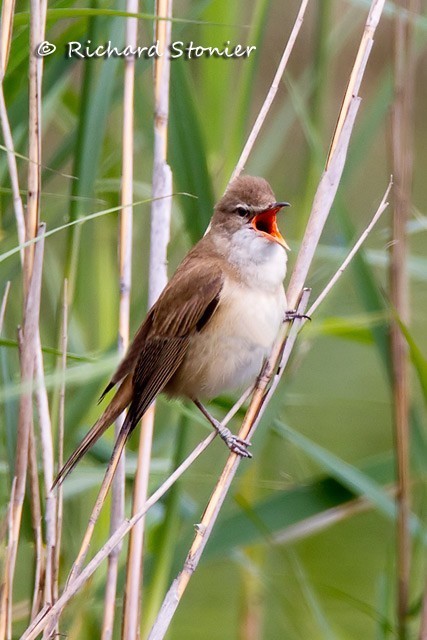
Great Reed Warbler, Straw's Bridge NR, Derbyshire (Photo: Richard Stonier)

Great Reed Warbler, Maltraeth Marsh RSPB, Anglesey (Photo: Ian Hawkins)

Marsh Warbler, undisclosed site, Northumberland (Photo: Tim Mason)
The long-staying 'white-spotted' Bluethroat remained at Welney (Norfolk) until 16th, with a female at Collieston (Aberdeenshire) on 10th and one on Fair Isle (Shetland) on 15th. Channel Wagtails were reported from Hurworth Burn Reservoir (Durham) on 12th and again at Fiskerton Fen (Lincolnshire) on 16th, with a possible Grey-headed Wagtail at Meikle Loch (Aberdeenshire) on 15th. Other pipit 'possibles' were a Richard's on Ramsey Island (Pembrokeshire), seen briefly twice on 12th but never confirmed, and a Red-throated over Capel Curig (Conwy) on 16th.

Bluethroat, Welney WWT, Norfolk (Photo: Mark Wilson)
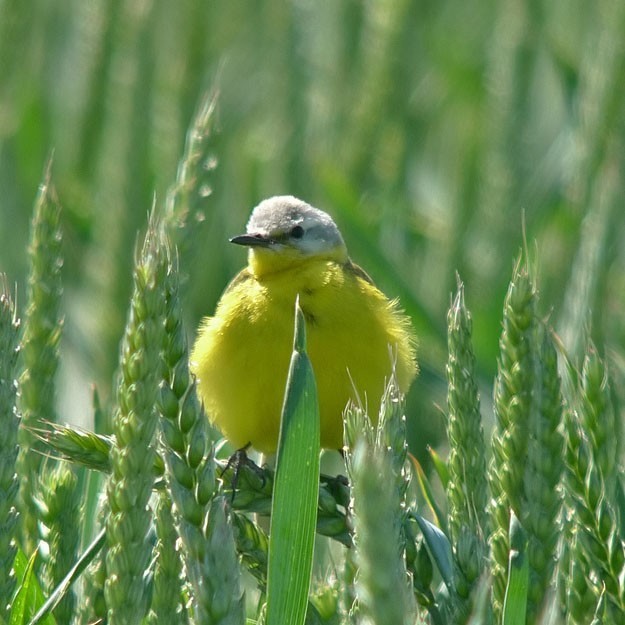
Channel Wagtail, Fiskerton Fen, Lincolnshire (Photo:
Russell Hayes)
The tail-end of the passerines included an annoyingly elusive first-year male Common Rosefinch at Tottenham Marsh (London) on 13th–15th (the first to stay for more than a day in the capital since 1987), a male on Dursey Island (Co. Cork) on 15th and a first-year at Dungeness (Kent) on 16th. Finally, a male Rustic Bunting was on Fair Isle (Shetland) on 15th.
Photo of the Week

Gannet, Bempton Cliffs RSPB, East Yorkshire (Photo:
Marcus Conway - ebirder)
Bird photographer Marcus Conway is always on the lookout out for opportunities to create images that stand out from the mainstream. A recent trip to Bempton Cliffs RSPB in East Yorkshire saw him bag yet another eye-catching image, this time featuring an 'air-braking' Gannet set against a blue sky. Capturing the Gannet as it approached head-on made all the difference to this shot because it resulted in a fascinating pose, with strong eye contact. The vertical, 'standing on its tail' position of the bird, with a mixture of symmetrical and asymmetrical elements, creates a high-tension composition, whilst the shapes and outlines of the bird's features provide masses of interest value as your eyes trace around the image.
Other notable photos

Mute Swan, Yarrow Valley CP, Lancashire (Photo:
David Cookson)

Little Owl, Debenham, Suffolk (Photo:
Jon Evans)

Common Redstart, Penicuik, Lothian (Photo:
Mike Thrower)

Gannet, Point of Ayre, Isle of Man (Photo:
Chris Wormwell)

Little Bittern, Qatar (Photo:
Dileep Kumar)

Great Crested Grebe, Yarrow Valley CP, Lancashire (Photo:
David Cookson)

Common Tern, Lodmoor RSPB, Dorset (Photo:
Dave Dowdeswell)

Cetti's Warbler, Minsmere RSPB, Suffolk (Photo:
Ian Clarke)

Great Spotted Woodpecker, Arborfield, Berkshire (Photo:
Dave Bartlett)

Starling, undisclosed site, Northamptonshire (Photo:
John Betts)

Swallow, Tetney, Lincolnshire (Photo:
Don Davis)

Common Redshank, Kirkcudbright, Dumfries & Galloway (Photo:
Brian Henderson)

Common Sandpiper, Horton in Ribblesdale, North Yorkshire (Photo:
John Barlow)
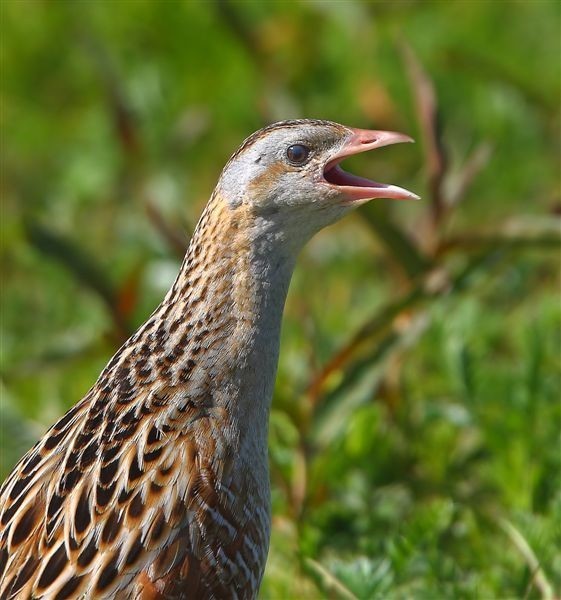
Corncrake, Balranald RSPB, N.Uist, Outer Hebrides (Photo:
James Wood)
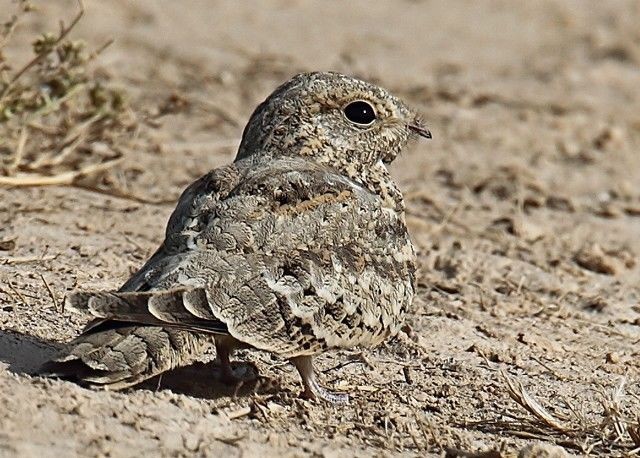
Egyptian Nightjar, Qatar (Photo:
John A Thompson)

Lesser Redpoll, Elan Valley, Powys (Photo:
Steve Wilce)

Common Crossbill, Mull, Argyll (Photo:
Kev Joynes)

Black-necked Grebe, undisclosed site, West Yorkshire (Photo:
Darren Chapman)

Spotted Flycatcher, undisclosed site, Bedfordshire (Photo:
David Whistlecraft)
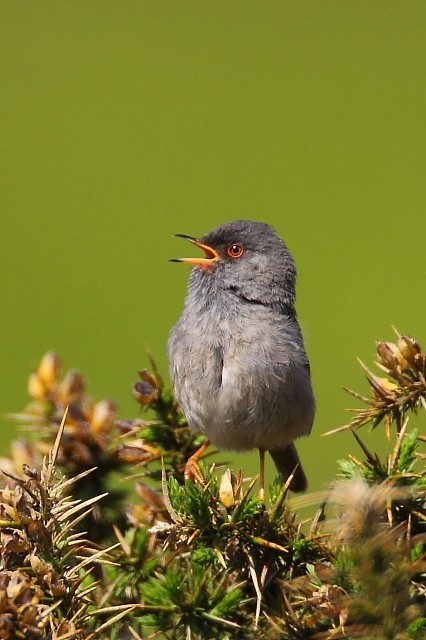
Marmora's Warbler, Blorenge, Gwent (Photo:
Lewis Thomson)

